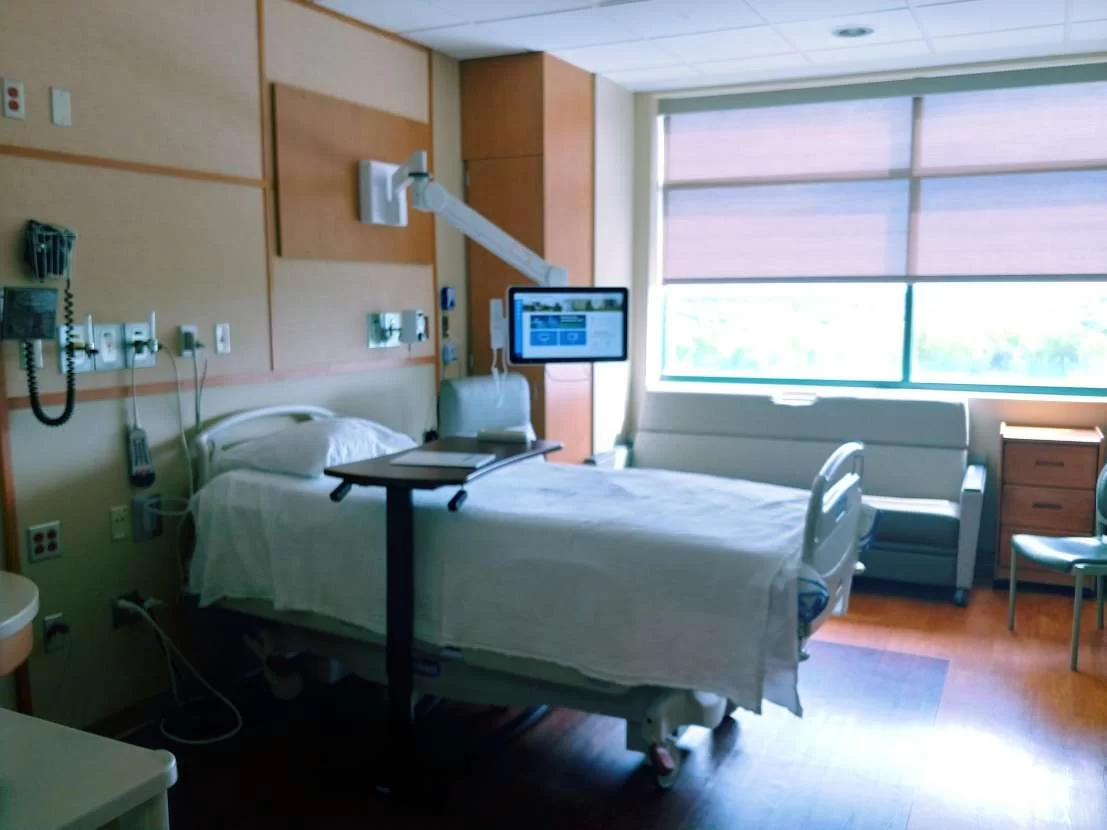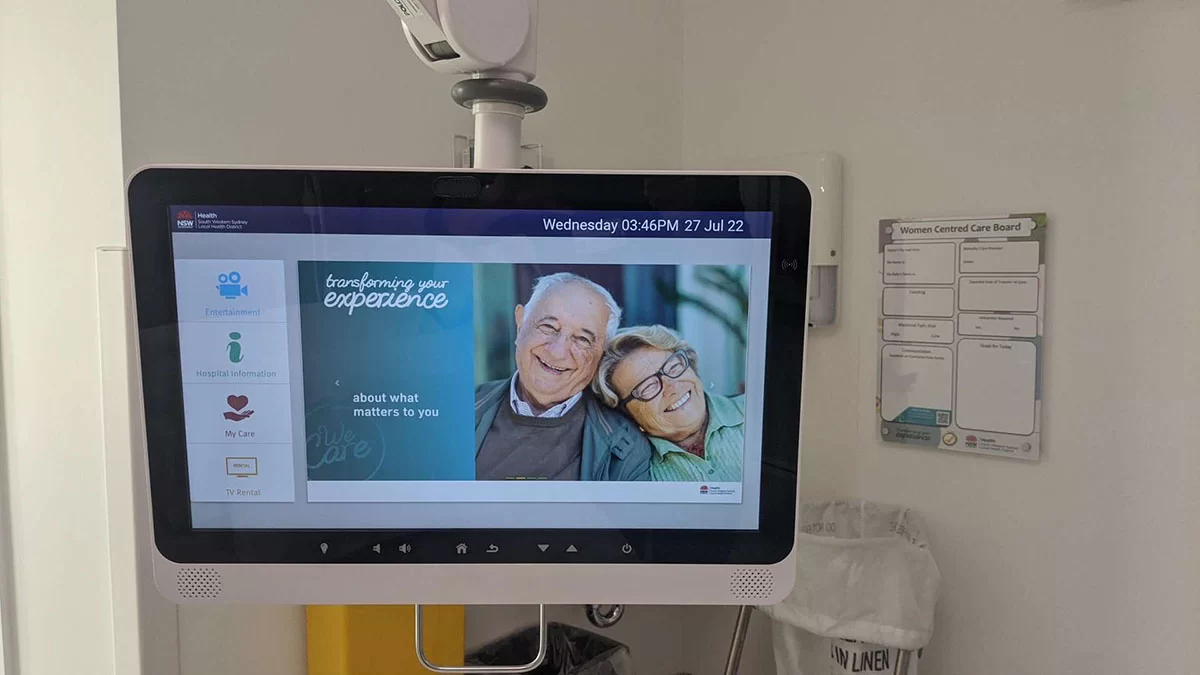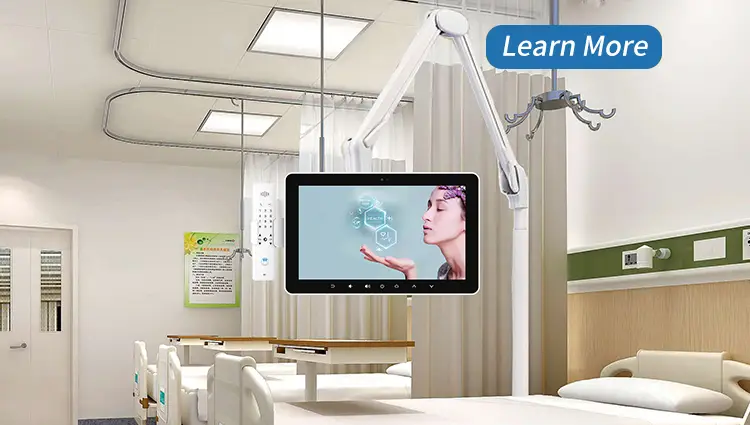In today’s fast-paced world, our beds have become more than just a place to rest. They have evolved into a personal haven where we seek comfort, relaxation, and entertainment. This is where the bedside infotainment terminal comes into play. These devices have revolutionized the way we spend our time in bed, offering a plethora of features that cater to our diverse needs. But have you ever wondered how a simple device can have such a profound impact on our bedtime routine? Let’s delve deeper into the world of bedside infotainment terminals and discover their wonders.

The Evolution of Bedside Infotainment Terminals
The journey of bedside infotainment terminals dates back to the early days of radio alarm clocks. These basic devices were primarily used to wake us up in the morning and provide some light entertainment in the form of radio broadcasts. However, with the rapid advancement of technology, the humble bedside device has undergone a remarkable transformation.
The introduction of LCD screens was a game-changer. It allowed for the display of more information, such as time, date, and even simple graphics. This was the first step towards turning the bedside device into a multifunctional unit. As years passed, the market for bedside infotainment terminals witnessed exponential growth. According to a recent market research report, the global market for bedside infotainment terminals has grown by approximately 30% since 2015. This growth can be attributed to the increasing demand for devices that offer a combination of convenience, entertainment, and functionality.
With the advent of smartphones and tablets, bedside infotainment terminals have further evolved to integrate with these devices. This has opened up a whole new world of possibilities, allowing users to stream music, movies, and other content directly to their bedside screens. The continuous innovation in this field has ensured that bedside infotainment terminals remain at the forefront of technological advancements, meeting the ever-changing needs of consumers.
Key Features of Modern Bedside Infotainment Terminals
High-definition touch screen
One of the most prominent features of modern bedside infotainment terminals is the high-definition touch screen. These screens offer crystal-clear visuals, making it a pleasure to watch movies, read e-books, or browse through photos. The touch screen interface is intuitive and user-friendly, allowing for easy navigation through various applications and functions.
For example, the [MT2199] bedside infotainment terminal comes with a [21.5-inch] high-definition touch screen that offers a resolution of [1920×1080]. This ensures that every image and video is displayed with exceptional clarity and vivid colors. Whether you’re watching your favorite TV show or reading a digital magazine, the touch screen provides a seamless and immersive experience.
Moreover, the touch screen technology has advanced to the point where it can accurately detect multiple touches, enabling features such as pinch-to-zoom and swipe gestures. This makes it even more convenient to interact with the device, enhancing the overall user experience.
Wireless connectivity
In today’s wireless world, connectivity is key. Modern bedside infotainment terminals come equipped with a range of wireless connectivity options, including Wi-Fi and Bluetooth. This allows users to connect their smartphones, tablets, or other devices to the terminal effortlessly.
Once connected, users can stream music from popular music streaming platforms like Spotify or Apple Music directly to the bedside speaker. They can also mirror the screen of their smartphone to the terminal’s display, enabling them to watch movies or play games on a larger screen. According to a survey conducted among users of bedside infotainment terminals, over 70% of them use the wireless connectivity feature at least once a day.
Wireless connectivity also enables seamless integration with smart home devices. For instance, users can control their smart lights, thermostats, or other connected devices directly from their bedside infotainment terminal. This creates a more convenient and integrated living environment, allowing users to manage their home settings without having to get out of bed.
Multifunctional applications
Modern bedside infotainment terminals are not just entertainment devices; they are also packed with a variety of multifunctional applications. One of the most common features is the built-in alarm clock. These alarm clocks offer a range of customization options, allowing users to set different wake-up times, choose from a variety of alarm tones, and even set snooze intervals.
In addition to the alarm clock, many bedside infotainment terminals also come with a calendar application. This allows users to keep track of their appointments, events, and schedules right from their bedside. Some terminals even offer integration with popular calendar apps like Google Calendar, ensuring that all your important dates are always at your fingertips.
Another important feature is the health monitoring capabilities. Some advanced bedside infotainment terminals are equipped with sensors that can monitor your heart rate, sleep patterns, and other vital signs. This data can be used to track your overall health and well-being, providing valuable insights that can help you make informed decisions about your lifestyle.
微信图片_20221109144813.jpg1_.webp)
Applications in Different Settings
Home use
At home, bedside infotainment terminals play a crucial role in enhancing the sleep environment. They can be used to create a relaxing atmosphere by playing soothing music or nature sounds. Many devices also offer ambient lighting features that can be adjusted to create a warm and cozy ambiance.
For example, some bedside infotainment terminals come with a built-in sound machine that offers a variety of calming sounds, such as ocean waves, rainforest sounds, or white noise. These sounds can help reduce stress and anxiety, making it easier to fall asleep. Additionally, the ambient lighting can be set to a soft, dim glow, creating a peaceful and relaxing environment.
Furthermore, bedside infotainment terminals can also be used for entertainment purposes. You can watch your favorite movies or TV shows before going to bed, or listen to an audiobook to unwind. The convenience of having all these entertainment options at your bedside makes it a great addition to any bedroom.
Hospital use
In hospitals, bedside infotainment terminals have become an essential tool for patient care. These devices provide patients with entertainment options during their stay, helping to alleviate boredom and reduce stress. They can be used to watch movies, play games, or listen to music, providing a much-needed distraction from the hospital environment.
Moreover, bedside infotainment terminals can also be integrated with hospital systems, allowing patients to access important information such as their medical records, treatment schedules, and medication details. This empowers patients to take an active role in their own care and improves communication between patients and medical staff.
According to a study conducted in several hospitals, patients who had access to bedside infotainment terminals reported a significant increase in their overall satisfaction levels. The ability to stay entertained and informed during their hospital stay had a positive impact on their mental well-being and recovery process.

Energy Efficiency and Sustainability
In an era where energy conservation and sustainability are of utmost importance, bedside infotainment terminals are also evolving to meet these challenges. Manufacturers are now focusing on developing energy-efficient devices that consume less power without compromising on performance.
One of the key technologies used to achieve energy efficiency is the use of low-power displays. These displays use advanced backlighting techniques and power management systems to reduce power consumption. For example, some bedside infotainment terminals use OLED displays, which are known for their energy efficiency and excellent contrast ratios.
In addition to the display, the processors used in these devices are also becoming more energy-efficient. Manufacturers are developing processors that are designed to consume less power while still providing smooth and responsive performance. This ensures that the device can run for longer periods of time without draining the battery.
Furthermore, many manufacturers are also taking steps to make their products more sustainable. This includes using recycled materials in the production process, reducing packaging waste, and implementing environmentally friendly manufacturing practices.
Choosing the Right Bedside Infotainment Terminal
With so many options available in the market, choosing the right bedside infotainment terminal can be a daunting task. Here are some factors to consider when making your decision:
Budget: Set a budget for your purchase and look for devices that fit within your price range. Keep in mind that more expensive models may offer more advanced features and better performance, but there are also many affordable options available that offer a good balance of features and value.
Features: Consider the features that are most important to you. Do you need a device with a large screen for watching movies? Do you want a device with built-in health monitoring capabilities? Make a list of your must-have features and use it as a guide when comparing different models.
Brand reputation: Choose a reputable brand that has a track record of producing high-quality products. Read product reviews and customer feedback to get an idea of the brand’s reliability and customer support.
Compatibility: If you plan to connect your bedside infotainment terminal to other devices, such as your smartphone or smart home devices, make sure the device is compatible with those devices. Check the device’s specifications and compatibility list to ensure a seamless integration.
For example, if you own an iPhone and want to mirror your screen to the bedside infotainment terminal, make sure the device supports AirPlay. Similarly, if you have a smart home ecosystem based on a particular platform, such as Google Home or Amazon Alexa, make sure the bedside infotainment terminal is compatible with that platform.
Conclusion
In conclusion, bedside infotainment terminals have come a long way since their humble beginnings as simple radio alarm clocks. They have evolved into multifunctional devices that offer a wide range of features and applications, enhancing our bedtime experience in numerous ways. Whether you’re looking for entertainment, convenience, or health monitoring, there’s a bedside infotainment terminal out there that’s right for you.
As technology continues to advance, we can expect even more innovative features and improvements in these devices. From enhanced wireless connectivity to more advanced health monitoring capabilities, the future of bedside infotainment terminals looks bright. So, take the time to explore the options available and choose a device that will transform your bedtime routine into a more enjoyable and relaxing experience.

